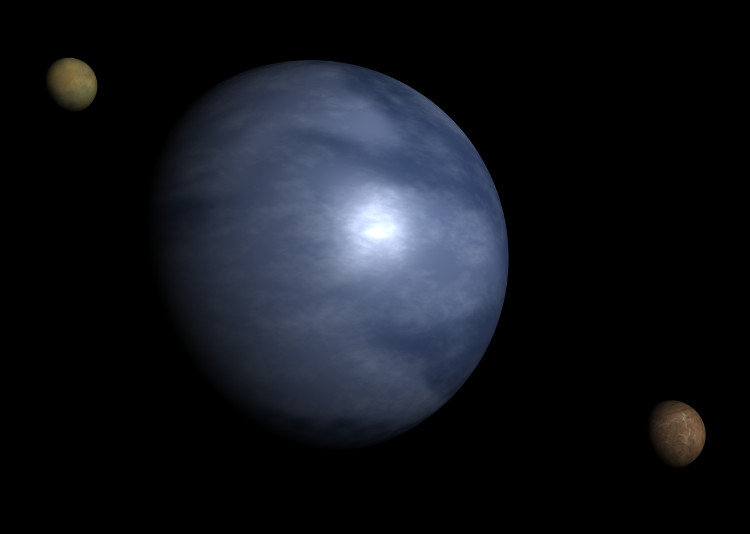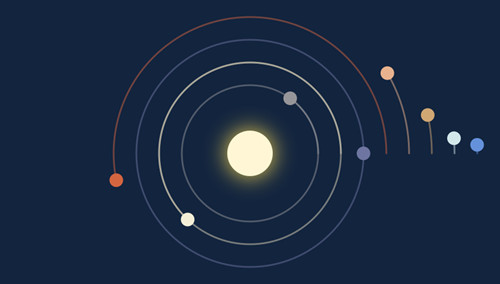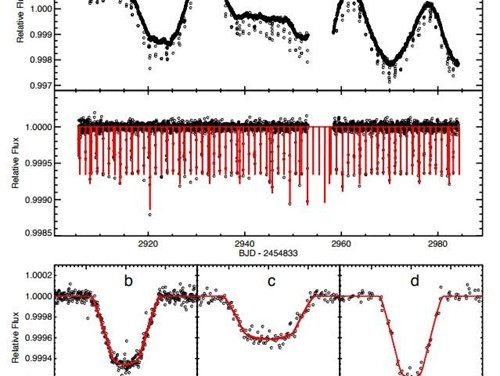Information 'fever' about new orbiting alien planets 'Super Earth'
NASA's Kepler telescope has just released fever information related to the presence of new extrasolar planets.
NASA's Kepler planet-hunting telescope has discovered more than 2,300 extrasolar planets in the universe ever. And in this new discovery, the telescope finds new planets of a planet orbiting a star called GJ 9827, dubbed a "super-Earth", about 100 light-years from Earth, which is bright star belongs to the K6V spectrum.

3 new exoplanets revolve around a star named GJ 9827. (Image Source: Phys).
These three exoplanets are in turn named GJ 9827 b, c and d . In particular, GJ 9827 b has a radius of 1.64 times the radius of the Earth but its exact mass is still uncertain. Researchers estimate its mass to be between 3.5 and 4.26 times the mass of the Earth. The planet orbits its parent star for about 1.21 days and has an equilibrium temperature of about 845 degrees Celsius.

These three exoplanets are in turn named GJ 9827 b, c and d.(Image source: Phys).
GJ 9827 c is the smallest and least developed planet in this newly discovered trio. Exotic planets have an equilibrium temperature of over 500 degrees Celsius and an orbital cycle of 3.65 days.

GJ 9827 c is the smallest and least developed planet in this newly discovered trio.(Image source: Phys).
And finally, GJ 9827 d is twice as big as Earth and at least five times our planet's mass. The outer surface of this planet has an equilibrium temperature of 374 degrees Celsius and takes 6.2 days to orbit the star's orbit.
- The super-Earth planet may contain life
- Detection of super-cold ice planets with mass like Earth
- Young alien planet promises to decode the formation of planets
- Detection of super Earth with water atmosphere
- Discover a star with 5 planets
- Discovered 'Earth materials' in 18 other planetary systems
- Detects two gas planets orbiting the star
- The most exotic new planets 2012
- Will humans migrate near the black hole in the end of the universe?
- NASA has discovered 3 planets smaller than Earth
- Take a photo of two sun planets
- Strange planet death story helps bring life
 Van Allen's belt and evidence that the Apollo 11 mission to the Moon was myth
Van Allen's belt and evidence that the Apollo 11 mission to the Moon was myth The levels of civilization in the universe (Kardashev scale)
The levels of civilization in the universe (Kardashev scale) Today Mars, the sun and the Earth are aligned
Today Mars, the sun and the Earth are aligned The Amazon owner announced a secret plan to build a space base for thousands of people
The Amazon owner announced a secret plan to build a space base for thousands of people